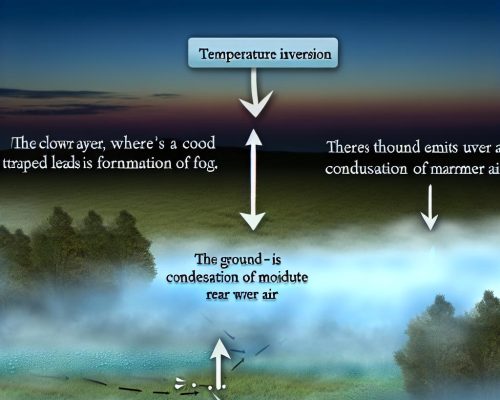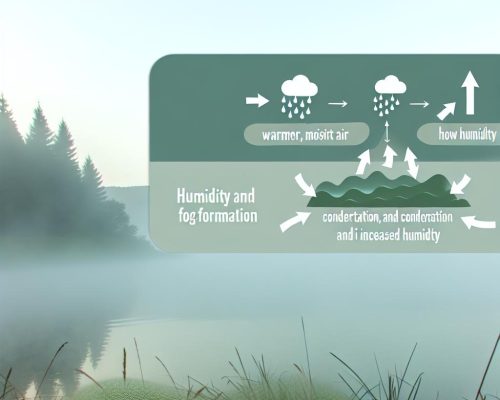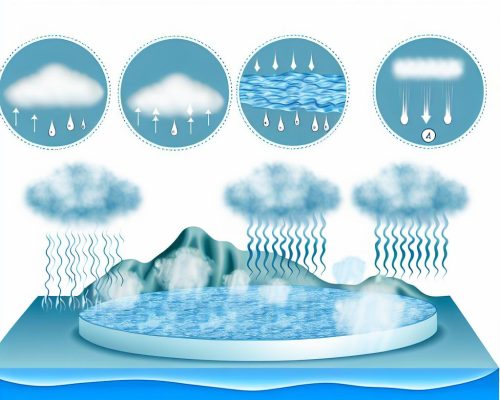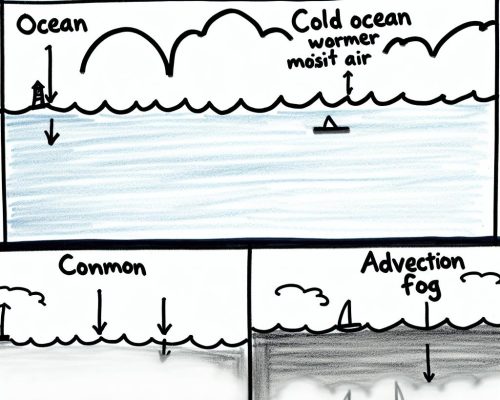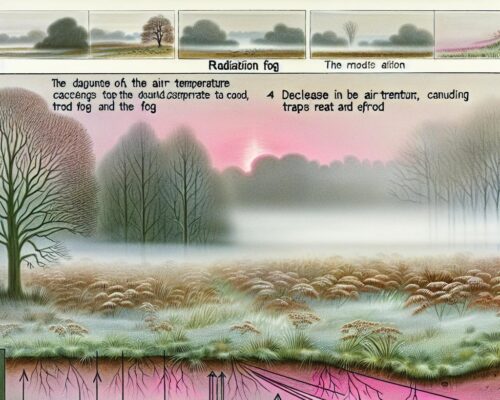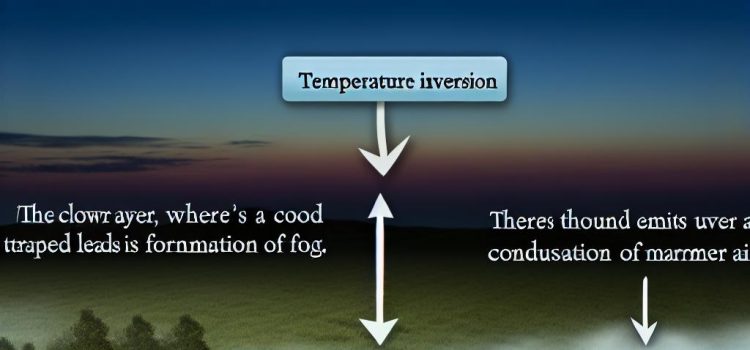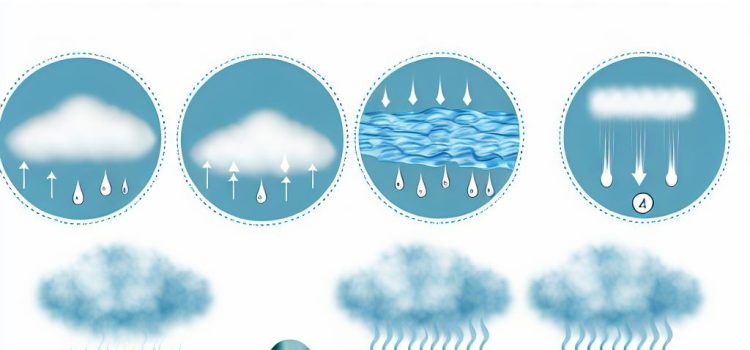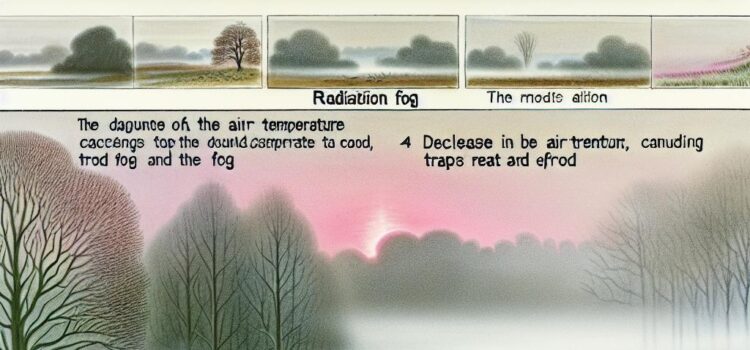
The Impact of Fog on Visibility
Understanding Fog and Its Formation Fog is a fascinating meteorological phenomenon, characterized by tiny water droplets that linger in the air near the Earth’s surface. Essentially, it is a type of cloud that hovers at ground level, leading to reduced visibility. The […]
Understanding Fog and Its Formation
Fog is a fascinating meteorological phenomenon, characterized by tiny water droplets that linger in the air near the Earth’s surface. Essentially, it is a type of cloud that hovers at ground level, leading to reduced visibility. The formation of fog takes place under specific conditions, primarily when the air temperature reaches the dew point, resulting in the condensation of water vapor into tiny droplets.
Factors Influencing Fog Formation
The development of fog is influenced by several crucial factors:
Temperature: Temperature plays a critical role in fog formation. Typically, fog arises when the air cools rapidly, which often occurs during the night or early morning. As the air temperature decreases to the dew point, water vapor condenses into tiny droplets, resulting in fog.
Humidity: In environments with high humidity levels, there is an increased likelihood of fog formation. High humidity signifies a greater presence of moisture in the air, making it easier for fog to develop when temperatures fall.
Topography: The geographical landscape also plays a significant role in fog formation. Areas such as valleys and low-lying regions are more susceptible due to air cooling and settling in these parts. Dense fog can easily form in these areas, given the right conditions.
Types of Fog
Different types of fog arise from specific atmospheric conditions. Here are some of the major types:
Radiation Fog: This type of fog occurs when the ground loses heat rapidly during the night. As the ground cools, the air in close proximity also cools down to its dew point, resulting in radiation fog. This type is quite common during clear nights when there is little wind.
Advection Fog: Forming when warm, moist air glides over a cooler surface, advection fog results as the air reaches its dew point. This type of fog is common in coastal areas where sea breezes bring moist air inland.
Upslope Fog: Upslope fog occurs when air ascends over a slope, such as a mountain or hill. As the air rises, it cools adiabatically, leading to condensation and the formation of fog.
The Effects of Fog on Visibility
Fog poses a significant challenge to visibility, often reducing it below 1,000 meters. This impairment presents various challenges across several sectors, influencing everything from transportation to everyday activities.
Impact on Transportation
The transportation industry faces substantial risks due to fog, especially within aviation and road transport:
Aviation: Pilots depend heavily on visual references for takeoffs and landings. Dense fog can interfere with these visual cues, indicating potential delays, diversions, or even temporary airport shutdowns. As a result, fog can disrupt air traffic scheduling and logistics.
Road Transport: For drivers, fog diminishes the visible distance of obstacles severely. Reduced visibility necessitates lowered speeds and enhanced vigilance to avert potential collisions.
Mitigation Strategies
Various approaches can be adopted to reduce the impact of fog on visibility and safety:
Technology in Aviation: Modern technological advancements, such as Instrument Landing Systems (ILS) and radar, offer enhanced safety during low visibility conditions. These tools assist pilots in navigating challenging scenarios like dense fog.
Road Safety Measures: Implementing reflective road markings, using specialized fog lights, and enforcing reduced speed limits can improve safety for drivers. These measures help navigate fog-laden roads by enhancing visibility.
Economic Implications of Fog
Beyond safety concerns, fog has economic implications across various industries:
Aviation Delays: Fog-induced delays contribute to increased operational costs for airlines, affecting fuel consumption, staffing, and passenger satisfaction.
Commuter Disruptions: Delays in road transport can lead to significant productivity losses, impacting daily business operations and individual schedules.
Environmental Considerations
While fog can present challenges, it also plays an essential role in maintaining ecological balance:
Humidity Regulation: Fog assists in regulating humidity levels, particularly in local ecosystems. By providing necessary moisture, fog supports diverse flora and fauna dependent on humid conditions.
Water Cycle Contribution: Contributing to the water cycle, fog facilitates the slow release of water as droplets eventually evaporate, continuing the cycle of moisture in the atmosphere.
Conclusion
Fog is a common and impactful weather phenomenon with significant implications for visibility. Understanding its formation, types, and effects helps formulate strategies to mitigate its adverse impacts effectively. For more detailed meteorological information, visiting reputable sources such as National Geographic can provide additional insights into weather patterns and their complexities.
This exploration into fog enhances our comprehension of its dynamics and interactions with the environment. By acknowledging these factors, industries and individuals alike can better anticipate and manage the challenges fog presents, ensuring safety and continuity across affected domains.


